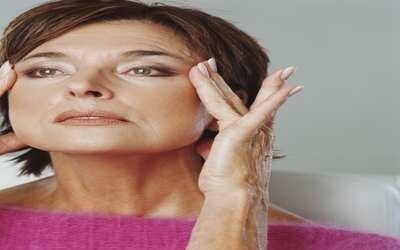The Age After Acne: Skin Health Concerns that Adults Face
You may think that skin health concerns are over once you reach the end of puberty, but many adults face issues over their skin wellness throughout their lives. The good thing about skin problems is that it’s easy to tell when your wellbeing has been affected, as when something goes awry, it is often easily visible during an examination of the skin. We’ve rounded up the top skin offenders out there, so you know what to watch out for.
1. Shingles: Also known as herpes zoster, shingles is basically a second round of chicken pox. The infection reoccurs due to latently infected nerve cells in your spinal cord or brain. At first, you might mistake shingles for a musculoskeletal injury, as it often begins with a painful sensation. However, the skin condition soon becomes apparent with a red, blistering unilateral (one-sided) rash. While shingles most frequently impacts the elderly, you can get it at any age. However, the good news is that you can prevent shingles with a vaccination, while antiviral drug treatment within 48 hours of the onset of the eruption limits the development of persistent, severe pain (neuralgia).
2. Hives: This very common skin condition – the scientific name for which being urticaria, if you’re interested – occurs when antibodies in your blood stream recognise foreign chemicals. You’ll notice elevated bumps surrounded by an intensely itchy red rash anywhere on your body. There may also be lesions, but each one disappears after eight to 12 hours. In most cases, the hives will spontaneously resolve themselves within eight weeks, but oral antihistamines can provide relief to your symptoms.
3. Psoriasis: In this chronic, inflammatory genetic condition, you develop scaling red bumps that combine into plaques. Typically, these appear on your scalp, elbows, and knees and will come and go by themselves. Depending on the severity and extent of involvement, you may be able to find relief by using topical creams and ultraviolet light exposure to oral drugs and injectable medications. Unfortunately, psoriasis is not curable and raises your risk for cardiovascular disease.
4. Eczema: Like psoriasis, eczema – or atopic dermatitis if you’re feeling fancy – is a genetic condition. It turns up during your childhood with a chronic itchy, weeping, oozing dermatitis, often localised in the creases opposite your elbows and knees. You might also experience allergies, such as asthma and hay fever. Luckily, the condition improves as you age and there are treatment options, such as the application of emollients to wet skin and the use of topical steroids.
5. Rosacea: This chronic inflammatory condition pops up on your face, giving you redness, dilated blood vessels, papules, pustules, and occasionally by the overgrowth of nasal connective tissue (rhinophyma) – lovely. On a superficial level, it resembles that teenage acne you were so keen to get rid of, and often incurs persistent facial flushing, which is an early sign that your skin has an uncontrolled sensitivity to certain naturally produced inflammatory chemicals. Topical and oral drugs can be used for treatment, as well as avoiding certain foods like tomatoes.
6. Cold Sores: Herpes labialis, fever blisters, cold sores – whatever you want to call it – is caused by the herpes simplex virus. The virus is dormant in your spinal cord nerve cells, and is triggered by environmental factors like a sunburn or cold. The virus then travels along a peripheral nerve to the same skin site over and over again. You’ll commonly find the sores on the edge of your lip for about seven to 10 days, making treatment unnecessary unless the eruption becomes too frequent.


Comments are closed.